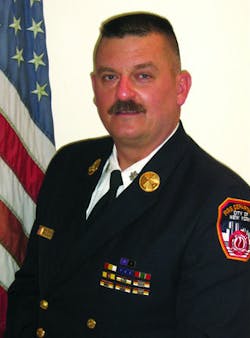Contrary to what you might think of the article title, this article isn’t about supervisors and subordinates. It’s about company officers and, specifically, three levels of personnel: the company officer, their superiors and their subordinates. The company officer is the only person in the fire service who is in this unique position. Some of the relationships that will be discussed do exist between other levels of officers, but the company officer is that place between the working firefighter and the chief—not the chief of department, but the first-level chief officer (often a battalion or district chief). This special level in the chain of command is responsible both up and down the chain.
The supervisor role
When you look at the people and issues that company officers are responsible for, it’s a long list. In a unique way, a company officer is a platoon or shift supervisor. They are responsible for the firefighters who are assigned to work with them in the same company, on the same shift. These company officers are charged with maintaining discipline, supervising firehouse duties, commanding emergency operations, keeping their crew safe, training their people and much more. Each of these responsibilities usually positions the officer in a supervisory role above the firefighters, and they have been granted the authority to issue the appropriate orders to get the work done.
How the officer handles these responsibilities will have a tremendous impact on the relationship that exists between the officer and the firefighters as well as the overall effectiveness of the company. Company officers that practice effective leadership skills will develop a loyal, disciplined and effective crew. This crew will not only be well trained but they will also begin to develop increased levels of self-discipline and responsibility. These behaviors will in turn result in the company officers granting greater flexibility and self-determination to the members of their crew … and the spiral upward continues.
Company officers who insist on making every decision without consulting any member of their crew, who demand every tactic and operation be conducted as prescribed by them only and who work unilaterally rather than in cooperation with their crew will eventually discover that their crew will not demonstrate initiative but instead sit on their hands until they are given and order. This is obviously a non-productive structure operating from the single perspective of the company officer. The number of ideas, options and methods will be reduced in most cases to one. This is certainly not the most productive or effective model for a fire company.
The subordinate role
When we take a look at the relationship between company officers and their supervisors, there is a different atmosphere. When a battalion or district chief is overseeing the activities and operations of a company officer, they are supervising a supervisor. They are not dealing with working firefighters whose primary responsibilities are task-orientated. They are supervising junior officers who have both tactical and strategic responsibilities in their role of supervising their subordinates. The chief is also responsible for the discipline and supervision of the firefighters, but they often delegate that work to their company officers. This issue is handled differently in many fire departments, but one of the most effective methods is for the chief officer to not only allow but also encourage their company officers to handle company-level discipline. This means that personnel conflicts, tardiness, participation in firehouse duties and other company-level transgressions should be handled by the company officer. There is no need for company officers to refer or report these low-level situations to the next level of command in order for them to be handled. Rather, they should be handled at the company level and documented for future reference.
Another issue that chief officers should consider is that some of their company officers may have different methods of handling firehouse situations. Yes, the chief has more seniority and experience in handling problems, and they may even have an excellent reputation as a problem-solver, but they should avoid dictating to their company officers how to handle these situations. Many chiefs will confer or discuss with their company officers about how they have successfully handled similar situations in the past, but they should still leave the decision to the company officer. Obviously, more senior company officers can be granted more latitude in this endeavor, but even junior officers should be encouraged to work through these issues at the company level.
In sum
The company officer role represents a symphony of talents, skills, responsibilities and opportunities. It’s important that everyone understand this unique role in the fire department hierarchy.
About the Author
John J. Salka Jr.
Battalion Chief
JOHN J. SALKA JR., who is a Firehouse contributing editor, retired as a battalion chief with FDNY, serving as commander of the 18th battalion in the Bronx. Salka has instructed at several FDNY training programs, including the department’s Probationary Firefighters School, Captains Management Program and Battalion Chiefs Command Course. He conducts training programs at national and local conferences and has been recognized for his firefighter survival course, “Get Out Alive.” Salka co-authored the FDNY Engine Company Operations manual and wrote the book "First In, Last Out–Leadership Lessons From the New York Fire Department." He also operates Fire Command Training, which is a New York-based fire service training and consulting firm.

